Mermaids are popular mythological creatures who have been worshipped and feared for many centuries in all continents of the world. Their looks and roles vary a lot depending on the location and time. They were perceived as goddesses, protectors, seductresses, and tragic heroines This article is an attempt to present a few of the most popular mermaids in history. While some of them are technically water spirits, my main goal is to establish some form of connection between these mythological and fairy creatures so that the reader can get a general impression of their history and main characteristics.

10 Famous Mermaids
by Tolovaj
Can you name at least three famous mermaids? Do mermaids always live in the sea? What are the most popular stories about them?
1. Atargatis
Atargatis is, as far as we know, the oldest known mermaid in the world. She was a goddess of water, moon, and fertility in Assyria at least three thousand years ago. Several cultures in the Mediterranean worshipped her and she was considered a protector of several cities. The best-known legend about her tells an immortal story about an inordinate love between the goddess and a human. In one version she accidentally kills him and in the other she gets pregnant. In both cases, she tries to commit suicide but other gods prevent that by changing part of her body into a fish. She is sometimes presented as a fish with a human head and sometimes as a woman (full body) with an addition of a fish tale.
Atargatis was a model for several goddesses in other cultures, including Ishtar in Mesopotamia and Aphrodite in Greece.
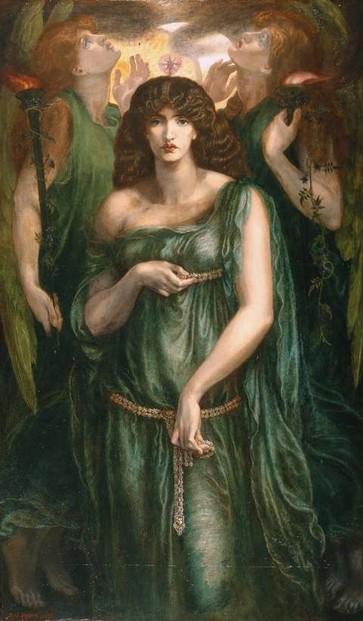 |
2. Scylla
We are familiar with her from Homer's Odyssey where she is presented as the monster who takes six sailors every time a ship passes by. But the famous poet took a bit too much liberty in this case. Scylla is an Etruscan sea goddess with one or two fishtails and the upper body of a woman. Her specialty is dogs protruding from her waist!
It's not clear if Etruscan Scylla is the same as a nymph Scylla, the object of affection by Glaucus. Glaucus was a mortal who turned into a sea god by eating magic herbs. He asked Circe to help him win Scylla's heart but instead, Circe fell in love with him and turned Scylla into a monster.
Homer also mentions sirens, beautiful women who tempted sailors into grave dangers with enchanted singing. While sirens are different kinds of hybrids (women with bird's wings and legs), painters around the 8th century started presenting them as half woman half fish, so the terms siren and mermaid slowly started being used interchangeably.
3. Mermaid of Zennor
Zennor is a village in Cornwall, England, named after St. Senara. There's a legend that a mysterious woman visited this church in the 15th century. Nobody knew where she came from or where she went to but everybody noticed her superb singing. People also noticed her interest in Mathey Trewella, a young and talented chorister. One day he followed her and nobody saw him or her again.
Sometime later, a ship anchored in the nearby bay. A mermaid appeared and asked if the anchor could be moved because it blocked the door of her underwater home. People believe that her and her husband's singing can still be heard from time to time.
4. Sirenka Warszawska
Warshaw has its mermaid, too. While it doesn't have a sea, its rivers were important for travel, trade, and fishing for centuries. There's a legend about fishermen who spotted somebody messing with their nets, freeing fish, and making other pranks. It was a water spirit with a beautiful voice and they tolerated her behavior because she sang so well. But one of the traders caught her to improve profits and the fishermen released her from prison. From then on, she became a protectress of the town.
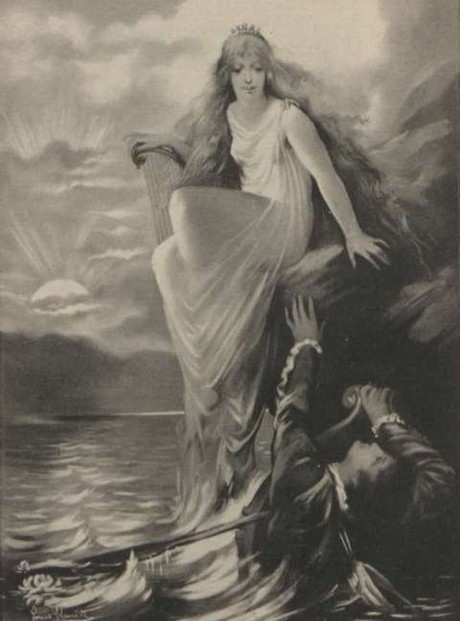 |
5. Lorelei
Lorelei is very likely the second best-known mermaid, yet technically speaking she is not a mermaid at all. Lorelei (direct translation would be 'murmuring rock') is a high rock at the bank of the river Rhine, where a tragedy happened. According to the legend Lore Lay was a beautiful woman betrayed by her lover. She was so desperate she killed herself by jumping from the rock into the river where she was transformed into a water spirit who lures fishermen into danger.
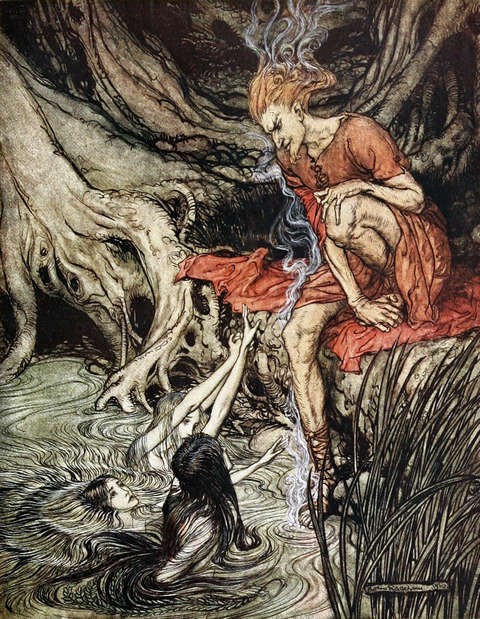 |
6. Rhinemaidens
Rhinemaidens are three water nymphs named Flosshilde, Wellgunde, and Woglinde. They are guardians of the gold in the Rhine. They are a product of several different legends and myths about water spirits in Central Europe, created by Wagner for his famous Ring of Nibelung cycle. They have a protector Alberich who is in love with them. Rhinemaidens play with his feelings for their own amusement.
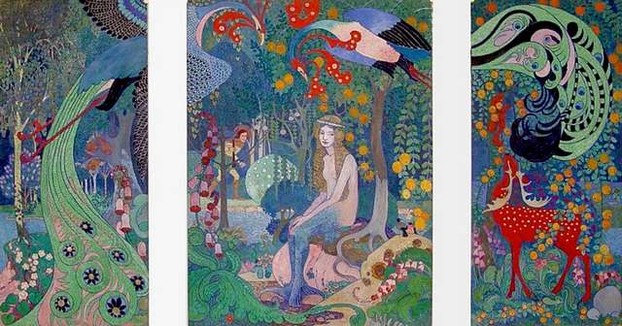 |
7. Melusine
Melusine is an old legend known in several versions. The most popular one is from the 14th century, written by Jean d'Arras. A king meets a beautiful fairy (he doesn't know that) and wants to marry her. He has to promise he will never look when she is bathing their children but breaks his promise and she leaves him with their three daughters. When the girls find out why they live in poverty, they kill him and their mother curses them. One of the girls is Melusine who becomes each Saturday half woman and half serpant.
When Melusine marries, her husband has to make a similar promise as her father. Of course, he fails ...
8. Undine
Undine is another water spirit who falls in love with a human. There is only one condition for her happiness - he must be faithful to her. If not, she will die. Undine was first mentioned by Paracelsus in the 16th century but became really famous when de la Motte Fouquet wrote a book about her tragic love and cruel revenge in 1811. For a few decades, Undine was among the most popular stories in the world!
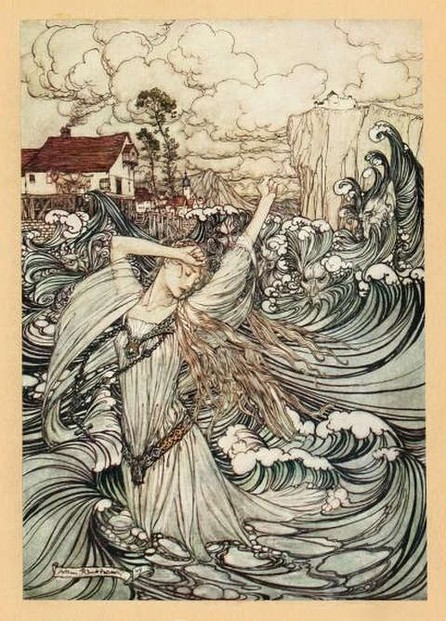 |
I have already prepared a post with more facts about Undine.
9. Little Mermaid
Little Mermaid is by far the most popular mermaid in the world. It's also the title of one of the best fairy tales written by Hans Christian Andersen who took in those days still very popular novella Undine, added several autobiographical elements, and adapted it for children. Essentially it's still a story of unrequited love between representatives of two different worlds - a mermaid and a prince.
 |
There is a full article about Little Mermaid to explore this fairy tale in detail.
10. Mermaid from The Fisherman and His Soul
When Oscar Wilde became a father, he believed his sons needed fairy tales, but the market, in his opinion, didn't offer any good ones. So he wrote two books (one for each son) with his own fairy tales, which were inspired by already-written fairy tales. The Fisherman and His Soul is a twist of Andersen's Little Mermaid. While Andersen's mermaid wants to get a soul to be with a human, Wilde's fisherman wants to get rid of his soul to be with a mermaid.
In both cases, things go South and the mermaid dies.
What is the most common characteristic of mermaids?
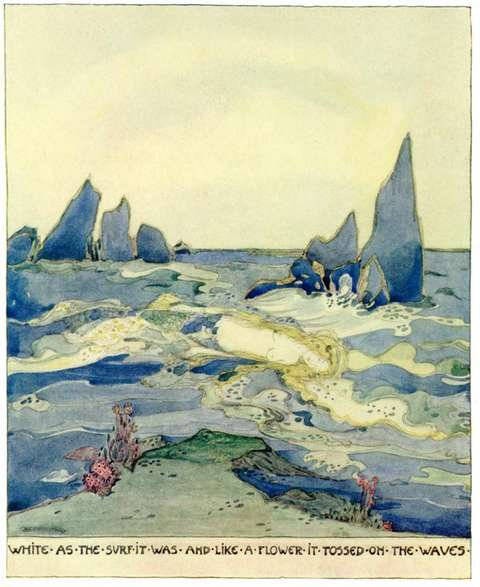 |
You might also like
Jessie Marion King - A Versatile Artist and EducatorJessie Marion King was a prolific Scottish artist and designer who worked in ...
Arthur Rackham: the most influential illustrator of 20th century?Arthur Rackham was one of most popular illustrators for decades. Rackham's wo...
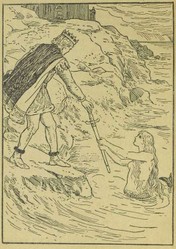

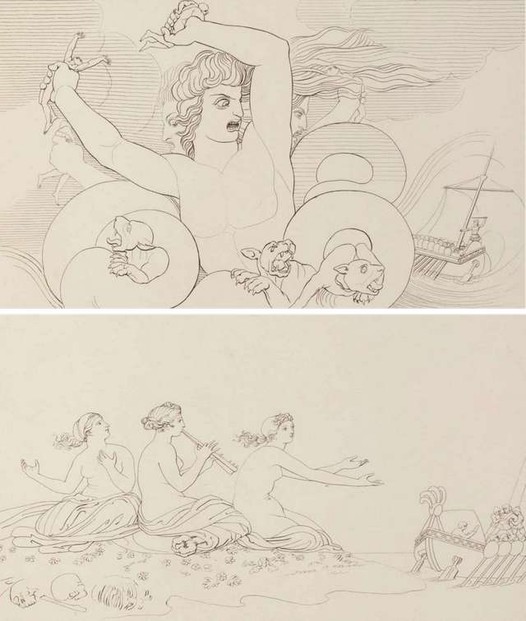




 Vintage Postcard Artists with 10 Examples of Easter Cardson 02/21/2025
Vintage Postcard Artists with 10 Examples of Easter Cardson 02/21/2025
 Valentine's Symbolson 01/23/2025
Valentine's Symbolson 01/23/2025
 Thanksgiving Symbolson 11/12/2024
Thanksgiving Symbolson 11/12/2024
 Famous Witches in Literary Historyon 10/06/2024
Famous Witches in Literary Historyon 10/06/2024

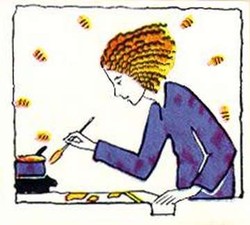

Can you share another story about mermaids?
I didn't find nothing like that. Maybe it's a niche worth exploring.
Homer claimed that. According to his writings Scylla had six heads - that's why.
Can't say much about their exercise. They look angry and dangerous, but there can be many reasons for that.
Unfortunately, at the moment I am involved in so many projects, I can't promise too much. But as you can see, I try to publish a wiz every week or so.
Thank you for the five links at the very end.
It's fun to find the coloring-book pictures.
The above might be considered the commercial presentation of the water-spirited mermaids.
Might it be well-received to have a coloring-picture book of the historical presentation of mermaids, from Assyrian Atargatis to Etruscan Scylla to European Lorelei; Melusine; Rhinemaidens Flosshilde, Wellgunde, Woglinde; and Undine?
The second subheading, Scylla, associates the latter with confiscating six sailors from every passing ship.
Is it known why six?
The second subheading, Scylla, alerts us to the latter's waist decorations or weapons of protruding dogs.
Do the dogs have different or similar ages, colors, dispositions, shapes and sizes?
Do they exercise in place, get no exercise or have away-from-waistline exercise time?
Thank you for your comment below in answer to my previous observation and question.
Might your article about forests in fairy tales be written also within the next months?
Rest assured that forests in fairy tales and merpeople in European traditions will be read and re-read and re-read once they wend their way into your wizzlies ;-D!
Sorry, I am mostly familiar with merpeople in Europe. This subject is so huge I intend to write at least one article about merpeople in next months. I am sure i will know more then.
Thank you for your comments below in answer to my previous observations and questions.
Please accept my apologies if I ask this question a second time. The computer crashed. I don't know if my question ended extant or extinct -- ;-D -- from that crash.
So here goes.
Amazon-basin traditions about merpeople inhabiting upside-down cities -- perhaps like UNESCO World Heritage Site Rani-ki-Vav (the Queen’s Stepwell) at Patan, Gujarat -- intrigue me.
Amazon-basin traditions invoke such native South American languages as Tupi-Guarani. Runa Shimi ("language of the people" [known as Quechua, "to steal" because of Spanish-speaking conquerors behaving badly by misnaming the language name of their conquerees]) is not an Amazon-basin native language even as it is a native language of coastal and near-coastal South America.
And yet Amazon-basin traditions list the merpeople as yacuruna (from Runa Shimi yacu runa, "water people").
Might you have seen the film The last wave by Peter Weir and with Richard Chamberlain? It notes what South-American culture and Thor Heyerdahl (Oct. 6, 1914-Apr 18, 2002) noticed: the Inca people operated linguistically in Runa Shimi, not their native language even as they originated biogeographically in lands westward from South America.
The Runa Shimi of Peru seems almost Asian tonal or Indian subcontinent-like in its sound even as the Otovalo Runa Shimi that I speak sounds not at all that way. Perhaps underwater, upside-down cities of Amazon-basin merpeople tell us of Sanskrit-talking origins of Inca peoples!
Would you have found any other stories about mermaids, mermen, merpeople wending their way through underwater, upside-down cities?